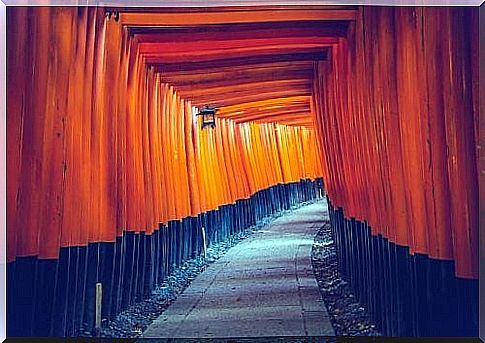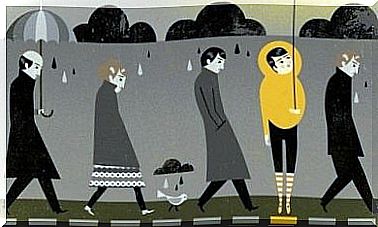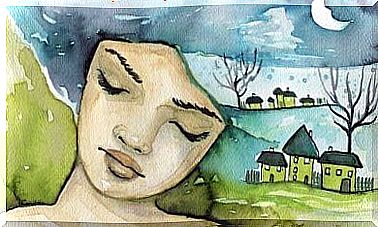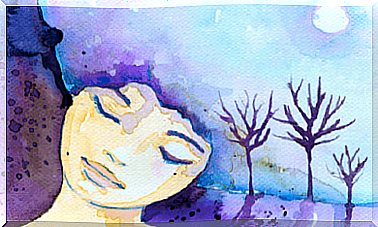The Origin Of Death According To Japanese Mythology

The origin of death according to Japanese mythology originated around an interesting legend about the creation of Japan. Despite the influence of ancient Chinese society, an important part of Japanese mythology is unique .
In addition, it contains both Shinto and Buddhist traditions, along with popular agricultural elements.
Conventional Japanese myths are based on Kojiki and Nihon Shoki . Kojiki literally means “Chronicle of the Ancient Things” and is the oldest book on myths, legends and history of Japan.
Nihon Shoki , which translates to “The Chronicles of Japan,” is the second oldest book on the same subjects and mainly describes the various deeds of the gods.
In this article, we explore the origin of death according to Japanese mythology. We do this through a great legend.
The legend of the creation of Japan according to Japanese mythology
At the dawn of time, the Japanese gods created two divine beings: a man named Izanagi and a woman named Izanami. These ancient gods entrusted their two creations with the mission to make a beautiful land.

Years later, once they had completed their mission, they decided it was time for offspring. The eight major Japanese islands were the result of this.
The world was ruled by harmony. The divine two lived together with their many children until Izanami gave birth to Kagatsuchi, the god of fire. Izanami passed away after a difficult birth.
The Kingdom of Yomi
Izanagi suffered terribly from the loss of Izanami. Instead of burying her body in Mount Hiba—the legendary mountain near Izumo in southwest Japan—he did something else. He decided to look for his beloved in the kingdom of Yomi, or the world of the dead.
Izanagi left for the dark land and there began his search for his beloved wife. All the demons around him warned him that Izanami could never go back. In other words, they told him that she would not be able to return to the land of the living if she had already tasted the fruit of Yomi’s kingdom.
After many months of hardship and suffering, Izanagi finally found his wife in a place of darkness. It was too late, however: Izanami had already tasted the fruit of the underworld. She told Izanagi that she couldn’t go back with him. Still , she went on to try and convince one of the Yomi leaders to let her go back.
A tragic fate
The only condition the gods made was that Izanagi should not look at his wife when he re-entered her palace in the underworld. However, he couldn’t resist the temptation.
He lit a small flame and entered the palace. With the light of the flame, Izanagi broke the law because he disturbed the harmony of the darkness. He looked at his wife’s body, which had turned into a rotten corpse.
The god fled in fear as his wife accused him of disgracing her. She hunted him all over Yomi’s kingdom in an attempt to kill him. After a ceaseless hunt, Izanami impaled Izanagi’s body with a spear. Of course he was seriously injured after this.
Yet he kept running; he ran until he felt a breeze from the outside world. Despite his wounds, he made it to the realm of the living. With what little strength he had left, he closed the thin fissure that connected both worlds with a large rock.
From the cave, Izanami yelled at her husband to let her into the realm of the living. However, being so shocked by everything he had just seen and experienced, he refused her this wish.
The goddess then threatened her husband that she would kill 1,000 people every day. To this, Izanagi said the following: “Then I will give life to 1,500 new people every day.” This is how death spread all over the world.
The Origin of Death According to Japanese Mythology

Japanese culture sees death as something filthy that needs to be cleansed. It is therefore important to wash, aromatize, dress and prepare the deceased for the final ceremonies after death. In this way the soul can safely leave for the afterlife.









